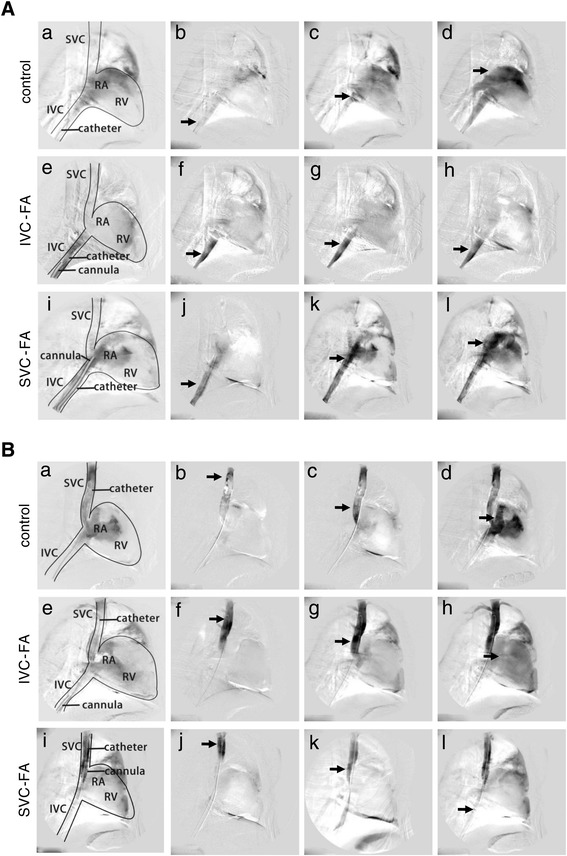Figure 4.

Vena cava angiography in IVC-FA and SVC-FA. The diagram (a, e and i) and representative photos in the early (b, f and j), intermediate (c, g and k) and late (d, h and l) stages of angiography are shown. (A) IVC angiography: contrast medium from the IVC. (a-d) IVC angiography in sheep without ECMO. (e-h) IVC angiography in sheep with IVC-FA. (i-l) IVC angiography in sheep with SVC-FA. Without ECMO, the contrast medium from the IVC entered the RA. In IVC-FA, the contrast medium from the IVC could not enter the RA. After shifting IVC-FA to SVC-FA, the contrast medium infused from the IVC could enter the RA again. (B) SVC angiography: contrast medium from the SVC. (a-d) SVC angiography in sheep without ECMO. (e-h) SVC angiography in sheep with IVC-FA. (i-l) SVC angiography in sheep with SVC-FA. Without ECMO or in IVC-FA, the contrast medium from the SVC entered the RA. After shifting IVC-FA to SVC-FA, the contrast medium infused from the SVC could barely enter the RA. The black arrow indicates the contrast medium. ECMO: extracorporeal membrane oxygenation; IVC-FA: a drainage cannula was placed into the inferior vena cava through the femoral vein and a return cannula was inserted into the femoral artery; RA: right atrium; RV: right ventricle; SVC-FA: a drainage cannula was placed into the superior vena cava through the femoral vein and a return cannula was placed into the femoral artery.
